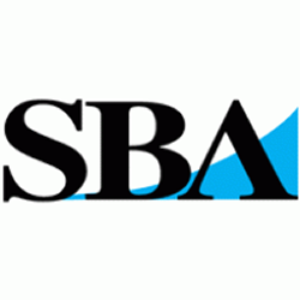Edumacated Redneck Repair, 420 N 13th St, (406) 200-7028, Steiner, Briana, Auto Business, Billings, 59101
Here We Are Recovery Residence, 2510 Rimrock Rd, (307) 370-1624, Lopez, Henry, Service, Billings, 59102, 621 S 2nd St, Laramie, WY, 82070
Hot Tub And Swim Spa Sales LLC, 1012 Marquez Place Ste 106-B, (657) 202-5007, Wellmann, Kevin, Retail Sales, Santa Fe, NM, 87505, 2501 South Wayzate Blvd, Minneapolis, MN, 55405
Cassandra Mai Designs, 1608 Annas Garden Ln, (208) 650-1405, Juvera, Cassandra, Service, Billings, MT, 59101
Fishing For Goodies LLC, 412 18th St W, (406) 671-5627, Garza, Andre, Retail Sales, Billings, 59102
Montana Craft Construction, 2113 Golden Blvd, (360) 991-2970, Asplund, Matthew, General Contractors, Billings, 59102
Dave Loden Construction, 400 Hemlock, (307) 684-5838, Loden, Erik, General Contractors, Buffalo, WY, 82834
Your Pie Billings, 824 Shiloh Crossing Blvd Ste 1, (406) 534-8738, Lueken, Monica & Dan, Restaurants, Billings, 59102, 3329 Castle Pines Dr, Billings, 59101
B M B Contracting Company, 5322 Danford Dr Trlr 1, {406) 200-2121, Newman / Coleman, Donald K / Tye A, General Contractors, Billings, MT, 59106
Mahoney Consulting LLC, 1780 Shiloh Rd Ste B, (406) 596-3105, Mahoney, Alyssa, Service, Billings, 59106, 119 W Maryland Lane, Laurel, MT, 59044
Cullum And Brown Of Kansas City Inc, 3205 Hesper Rd Unit B, (816) 842-7711, Hoffman, Andrew, Service, Billings, MT, 59106, 1001 NW Technology Dr, Lees Summit, MO, 64086
WH Copper Ridge 54, LLC (Williams Homes), 7011 Copper Bend Blvd, (661) 993-9889, Heffernan (Ops Manager), Danika, General Contractors, Billings, MT, 59106, 387 Gallatine Park Dr Ste 102, Bozeman, MT, 59715
Kalen Study The Pooper Scooper, 922 Yellowstone River Rd Trlr H4, (406) 384-1777, Service, Billings, MT, 59105
Jeff Kirby Construction Inc, 4215 Woodcreek Dr, (406) 690-3799, Kirby, Tanya, General Contractors, Billings, MT, 59106, PO Box 80930, Billings, MT, 59108
McCall Properties LLC, 1536 Mullowney Ln Ste 100, (406) 651-5354, Gregory, McCall, Real Estate Rental, Billings, MT, 59101
Stepping Stones Counseling & Recovery, 1201 Grand Ave Ste 2, (406) 696-8976, Erickson, Jessica, Service, Billings, MT, 59102,
Stokke Electric LLC, 47 Canyon Creek Rd, (406) 698-2703, Stokke, Zach, Electrical Contractors, Molt, MT, 59057
Elgm Building Contracting And Transportation, 3854 Avenue F, (571) 320-0049, Angord Dearmas, Yanick L, General Contractors, Billings, MT, 59102
Red Clover Construction, 1204 Nasturtium Dr, (406) 606-9690, Blaine, Davida, General Contractors, Billings, MT, 59105
Physioworks Physical Therapy LLC, 1416 Las Palmas Ave, (941) 387-4099, Denisar-Green, Brent, Service, Billings, MT, 59105
Beau Aesthetics & Wellness PLLC, 2631 St Johns Ave, (808) 518-9487, Posada, Britt, Service, Billings, MT, 59102, 2710 Hanover Circle, Billings, MT, 59106
Cobeck Construction Co LLC, 273 W Lafayette Frontage Rd, (651) 756-7521, Difronzo (Manager), Jane, General Contractors, Saint Paul, MN, 55107
Red Bear BBQ LLC, 1644 41st St W, (406) 598-0115, Bear, Scott, Restaurants, Billings, MT, 59106
Perman-It Investments, 7446 Burlington Ave, (406) 384-8129, Perman/Perman, Josh/Tom, Service, Billings, MT, 59106
Modern Paths Of Wellness Counseling, 527 Lake Elmo Dr, (406) 208-4289, Waltenbaugh, Shalom, Service, Billings, MT, 59105, 916 Dorothy Ln, Billings, MT, 59105
Alpha Transport LLC, 145 Talon Way Unit C, (406) 600-6600, Huggins/Dunn, Justin/Brittany, Service, Bozeman, MT, 59718
Melissa Riley Photography, 2977 W Copper Ridge Loop, (801) 368-7626, Riley, Melissa & Stewart, Service, Billings, MT, 59106
Storage Rental Of America (Bench), 1032 Bench Blvd, (561) 489-5517, Speegle (Manager), Kenneth, Service, Billings, MT, 59105, 2751 S Dixie Hwy Ste 450, West Palm Beach, FL, 33405
Storage Rental Of America (Overland), 2850 Overland Ave, (561) 489-5517, Speegle (Manager), Kenneth, Service, Billings, MT, 59102, 2751 S Dixie Hwy Ste 450, West Palm Beach, FL, 33405
Michelle’s Pantry LLC, 2123 1st Ave N, (406) 671-6440, Feller, Michelle, Restaurants, Billings, MT, 59101, 34 19th St W, Billings, MT, 59102
Rosemary Glass, 5515 Rimrock Rd, (808) 346-2790, Hatzell, Rosemary, Retail Sales, Billings, MT, 59106, 7013 Copper Sunset Dr, Billings, MT, 59106
Montana Clutch And Driveline, 3302 1st Ave N, (406) 256-9110, Beckner, John, Service, Billings, MT, 59101
Big Sky Handmade Creations, 5639 Mountain Front Ave, (406) 210-9081, Chase, Heidi, Retail Sales, Billings, MT, 59106
Oak & Stone Salon LLC, 2500 Grand Ave Ste H, (406) 696-7222, Mudro, Nicole, Cosmetology, Billings, MT, 59102, 1831 Old Hardin Rd, Billings, MT, 59102
JC Excavation & Construction, 2245 Chloe Rd, (406) 670-6041, Luster, Rob, Service, Huntley, MT, 59037, PO Box 399, Huntley, MT, 59037
237 Avenue C LLC, 237 Avenue C, (406) 544-6718, Schwab, Caleb, Real Estate Rental, Billings, MT, 59101, PO Box 1254, Mead, WA, 99021
TJ’s Builders, 564 Light Stream Ln, (406) 860-9089, Johnson, Trevor, General Contractors, Billings, MT, 59106
Innova Ink PC, 2116 Broadwater Ave #308, (406) 503-2213, Eles, Zsolt & Zora, Service, Billings, MT, 59102, 1600 Avenue E #41, Billings, MT, 59102
Autobongs, 2230 N Reserve St Ste 300 #181, (702) 848-0178, Smith, Jesse, Retail Sales, Missoula, MT, 59808
Brush And Bloom Beauty Studio, 1202 Central Ave, (406) 371-1911, Sjolseth/O’Dell, Ashley/Shawni, Cosmetology, Billings, MT, 59101
Blue Willow Massage, 1140 1st Ave N, (406) 249-7000, Rautio, Alice, Solo Practitioner, Billings, MT, 59101, 4775 Laila Dr, Billings, MT, 59106
The Brand Soap Co, 1260 Calico Ave, (406) 661-6000, Sitzman, Duane, Retail Sales, Billings, MT, 59105
Castro Facilities Management LLC, 3735 Fort Laramie Dr, (406) 208-0364, Castro, Michael, Service, Billings, MT, 59102
Happy Pairings MT LLC, 323 N 24th St, (406) 670-1720, Crawford, Lauren, Restaurants, Billings, MT, 59101, 1316 Emma Avenue, Billings, MT, 59105
Shelly’s Drywall & Painting, 7921 Clark Ave, (406) 860-3712, De La Paz, Shelly, General Contractors, Billings, MT, 59106
Larson Family Construction Inc, 24212 W Cedar Lake Dr, (612) 369-7056, Larson, Mike, General Contractors, New Prague, MN, 56071
Herman Enterprises LLC, 16 Reece Road, (307) 349-8359, Herman, Chad, Service, Riverton, WY, 82501
Montana Show-Me, 1792 S 6th Rd, (406) 661-5888, Dahl, Rebecca, Retail Sales, Huntley, MT, 59037
Cochran Towing LLC, 1202 S 32nd St W Ste M, (406) 545-8703, Lauer (Accountant), Arlene, Service, Billings, MT, 59102, PO Box 80067, Billings, MT, 59108
Cochran Towing LLC 1, 1202 S 32nd St W Ste M, (406) 534-1021, Lauer (Accountant), Arlene, Service, Billings, MT, 59102, PO Box 80067, Billings, MT, 59108
Cochran Towing LLC 2, 1202 S 32nd St W Ste M, (406) 894-2381, Lauer (Accountant), Arlene, Service, Billings, MT, 59102, PO Box 80067, Billings, MT, 59108
Cochran Towing LLC 3, 1202 S 32nd St W Ste M, (406) 894-2383, Lauer (Accountant), Arlene, Service, Billings, MT, 59102, PO Box 80067, Billings, MT, 59108
Cochran Towing LLC 4, 1202 S 32nd St W Ste M, (406) 534-4133, Lauer (Accountant), Arlene, Service, Billings, MT, 59102, PO Box 80067, Billings, MT, 59108
Cochran Towing LLC 5, 1202 S 32nd St W Ste M, (406) 534-4211, Lauer (Accountant), Arlene, Service, Billings, MT, 59102, PO Box 80067, Billings, MT, 59108
Wam Properties LLC, 6738 Shepherd Rd, (406) 670-2537, Wambeke, Brandee, Real Estate Rental, Shepherd, MT, 59079, PO Box 50314, Billings, MT, 59105
Code 96 LLC, dba Bare Metal Standard, 11513 W Fairview Ave Ste 103, (208) 898-9379, Stanley, Jeff, Service, Boise, ID, 83713
Flawless Premier Extension Salon, 1500 Broadwater Ave, (406) 661-2438, Law, Samantha, Cosmetology, Billings, MT, 59102
Esoteric Liminal Horizons, 111 Jefferson St, (406) 200-2978, Barth, Whitney, Service, Billings, MT, 59101
Deep Blue Pools And Spas, 43003 Liddell Lane, (385) 450-0344, Durham (Permit Tech), Liz, General Contractors, Polson, MT, 59860, 4153 S Commerce Dr, Salt Lake City, UT, 84107
Sessler Inc, 4524 Tacoma Ave, (253) 863-0660, Mayer (Manager), Kara, General Contractors, Sumner, WA, 98390
Heirloom Cleaning Services, 808 22nd St W, (406) 855-3695, Stevens, Courtney, Service, Billings, MT, 59102
Burnett Enterprises (White House Haven), 1032 N 29th St, (406) 696-2354, Jones, Clifton E, Real Estate Rental, Billings, MT, 59101, 448 Killarney Street, Billings, MT, 59105




